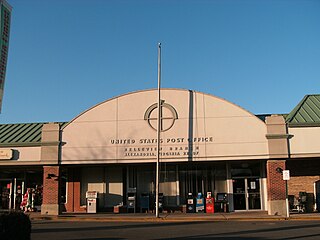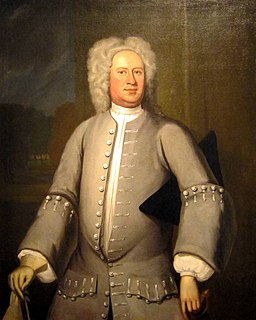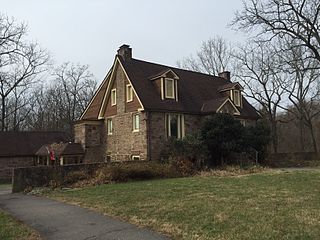
Belle Haven is a census-designated place (CDP) in Fairfax County, Virginia, United States. Nearby CDPs are Huntington (northwest), Groveton (southwest) and Fort Hunt (south). The population of Belle Haven was 6,518 at the 2010 census.

Chantilly is a census-designated place (CDP) in western Fairfax County, Virginia, United States. The population was 23,039 at the 2010 census. Chantilly is named after an early-19th-century mansion and farm, which in turn took the name of an 18th-century plantation that was located in Westmoreland County, Virginia. The name "Chantilly" originated in France with the Château de Chantilly, about 28 miles north of Paris.

Franconia is a census-designated place (CDP) in Fairfax County, Virginia, United States. The population was 18,245 at the 2010 census, down from 31,907 in 2000 due to the splitting off of part of it to form the Kingstowne CDP.

Rose Hill is a census-designated place (CDP) in Fairfax County, Virginia, United States. The population was 20,226 at the 2010 census. Built in the mid-1950s, Rose Hill is the largest of the subdivisions that make up the CDP, which is just southwest of Alexandria; others include Wilton Woods, Burgundy Village, and Winslow Heights. Street addresses are in Alexandria ZIP codes 22310, 22303 and 22315.
Peter Jefferson was a planter, cartographer and politician in colonial Virginia best known for being the father of the third president of the United States, Thomas Jefferson. The "Fry-Jefferson Map", created by Peter in collaboration with Joshua Fry in 1757, accurately charted the Allegheny Mountains for the first time and showed the route of "The Great Road from the Yadkin River through Virginia to Philadelphia distant 455 Miles"—what would later come to be known as the Great Wagon Road.

Robert "King" Carter was a merchant, planter and powerful politician in colonial Virginia. Born in Lancaster County, Carter eventually became one of the richest men in the Thirteen Colonies. As President of the Virginia Governor's Council, Carter served as the royal governor of Virginia from 1726 to 1727 after the previous governor, Hugh Drysdale, died in office. He acquired the moniker "King" from fellow Virginians in his lifetime connoting his wealth, autocratic business methods and political power. Carter also served as the colony's Treasurer, many terms in the House of Burgesses and twice fellow members elected him as their Speaker.

Piney Grove at Southall's Plantation is a property listed on the National Register of Historic Places in Holdcroft, Charles City County, Virginia. The scale and character of the collection of domestic architecture at this site recalls the vernacular architectural traditions of the eighteenth, nineteenth and twentieth centuries along the James River.

Sully Historic Site, more commonly known as Sully Plantation, is both a Virginia landmark and nationally registered historic place in Chantilly, Virginia.

Vaucluse was a villa in Fairfax County, Virginia, three miles (5 km) from Alexandria and 10 miles (16 km) from Washington, D.C., on a hill near the Virginia Theological Seminary, that was owned first by Dr. James Craik, and later by the Fairfax family, the first being Thomas Fairfax, 9th Lord Fairfax of Cameron.

William Fairfax (1691–1757) was a political appointee of the British Crown and a politician: he was Collector of Customs in Barbados, and Chief Justice and governor of the Bahamas; he served as Customs agent in Marblehead, Massachusetts before being reassigned to the Virginia colony.

Ossian Hall was an 18th-century plantation house in Annandale, Fairfax County, Virginia. Ossian Hall was one of three large residences, along with Oak Hill, and Ravensworth, owned by the Fitzhugh family in Fairfax County.
Towlston Grange is an 18th-century plantation in Great Falls in Fairfax County, Virginia, United States. The estate served as a residence for several prominent members of the Fairfax family. Towlston Grange is located at 1213 Towlston Road in Great Falls. There is a photograph of Bryan Fairfax's Towlston Grange in its unrestored state, taken by "The Rambler" of the Washington, D.C. Evening Star newspaper in 1918, that shows a 1+1⁄2-story clapboarded house built in the English tradition.[4]

Raspberry Plain is a historic property and former plantation in Loudoun County, Virginia, near Leesburg. Raspberry Plain became one of the principal Mason family estates of Northern Virginia, and was rebuilt in the early 20th century. It currently operates as an event site, hosting weddings and other special events year round.
Okeley Manor was an early 19th-century plantation in Fairfax County, Virginia, United States. Okeley, the residence of prominent Alexandria physician Richard Chichester Mason (1793–1869), was one of the principal Mason family estates in Northern Virginia. Mason' plantation house was used as a hospital during the American Civil War and burned to prevent the spread of smallpox.

Hollindale is an unincorporated community in Fort Hunt, Fairfax County, Virginia, United States close to the George Washington Memorial Parkway in ZIP code 22306. As of 2013, it had 945 residents. Mount Vernon Presbyterian Church and Hollin Meadows Elementary School are located within the community. Hollindale is set along the hilly woodlands across from the Potomac. It was built around several estates and on what used to be Sherwood Dairy Farm, and is adjacent to the Hollin Hills community. It is dominated by mid-century modern homes, colonials, and Tudors.
Hope Park was an 18th and 19th-century plantation in Fairfax County in the U.S. state of Virginia, where Dr. David Stuart (1753–1814), an old friend of and correspondent with George Washington lived with his wife, Eleanor Calvert Custis (1758–1811), and family. It was approximately 5 miles (8.0 km) southwest of Fairfax Court House.
The Burwells were among the First Families of Virginia in the Colony of Virginia. John Quincy Adams once described the Burwells as typical Virginia aristocrats of their period: forthright, bland, somewhat imperious and politically simplistic by Adams' standards. In 1713, so many Burwells had intermarried with the Virginia political elite that Governor Spotswood complained that " the greater part of the present Council are related to the Family of Burwells...there will be no less than seven so near related that they will go off the Bench whenever a Cause of the Burwells come to be tried."
Upper Brandon Plantation is an historic plantation in Prince George County, Virginia on the James River.

Ellanor C. Lawrence Park is located in Chantilly, Virginia, just north of Centreville, on Route 28. The park preserves the cultural and natural resources of western Fairfax County and has a long and complex history lasting 8,000 years. The land was originally inhabited by Native Americans, but as Europeans settled in Virginia, the land was shaped by only three families: the Browns, Machens and Lawrences. Through these periods, the land was used as a tenant farm, family homestead, and country estate until it was deeded to Fairfax County Park Authority as a 640-acre nature park in 1971.













